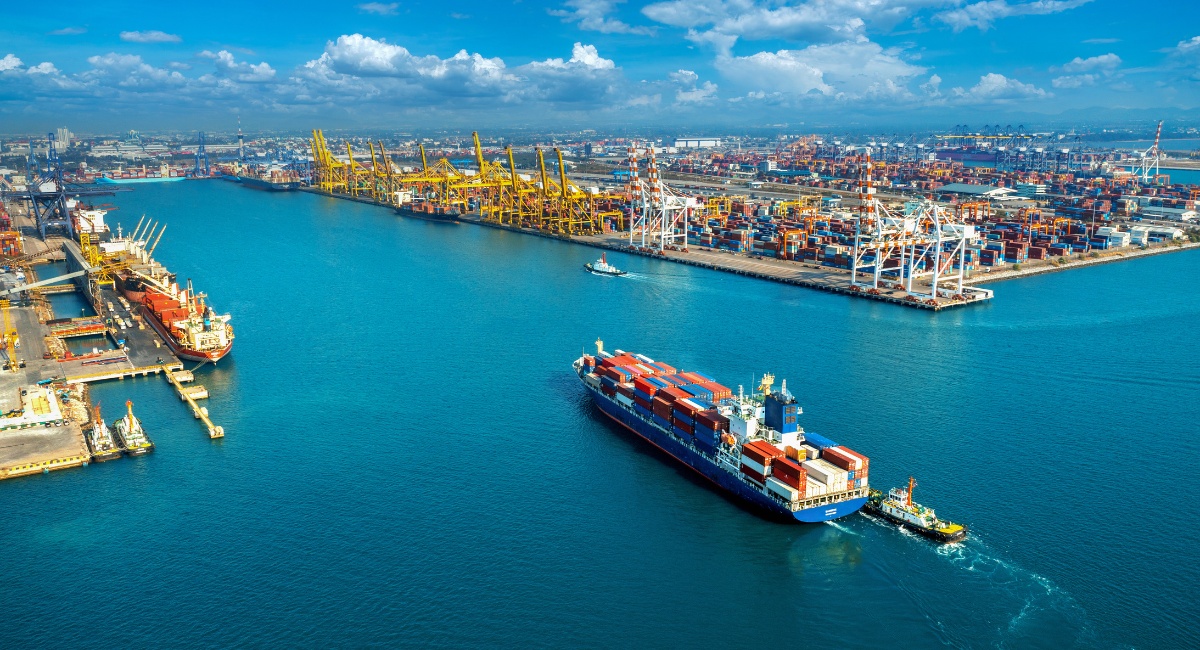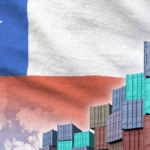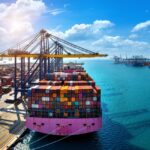Port congestion can be likened to a “maritime traffic jam”—a bottleneck in the seaborne trade system. Ships waiting for a berth, containers sitting in storage for extended periods, trucks queuing at entry gates: these slowdowns across the logistics chain result in delays, increased costs, and operational challenges for all stakeholders involved.
This is why understanding the underlying dynamics that cause these disruptions—and implementing concrete, effective solutions—is essential. In this article, we provide an analysis of these phenomena, in the hope that it will prove useful for those aiming to avoid such complications.
What are port operations?
To understand how a maritime bottleneck forms, it’s important to start with the daily sequence of port operations:
- Berthing and unberthing: The ship arrives, is moored, and container lifting begins.
- Yard operations: Containers are handled using cranes, reach stackers, forklifts, internal transport systems (such as terminal tractors), and coordinated through the TOS (Terminal Operating System).
- Cargo transit by road or rail: Containers are loaded onto trucks or trains and removed from the terminal.
- Customs clearance and inspections.
If any of these stages slows down, the entire flow is affected. For example, slow gate systems or manual bureaucratic procedures can cause truck bottlenecks, triggering a domino effect on yard storage and space availability. The TOS plays a critical role in managing the flow. Modern systems, powered by IoT, 5G, and predictive algorithms, optimize container stacking and resource allocation, reducing queues and wait times. In contrast, outdated or inefficient TOS solutions lead to delays that compromise operational fluidity.
What are port terminals?
In essence, port terminals are the physical and operational hubs where transshipment occurs, i.e., the transfer of cargo between vessels and land or rail transport. The main types include:
- Container terminals: Exclusively handle containerized cargo.
- Multipurpose terminals: Manage both general cargo and containers.
- Bulk/liquid terminals: Dedicated to commodities like grain, oil, minerals, and similar.
The TOS also manages gate scheduling, regulating truck inflows and outflows to reduce congestion. In highly digitalized ports, pre-registration and automatic vehicle recognition systems accelerate transit times. Conversely, outdated or poorly integrated systems significantly reduce efficiency.
How port congestion happens
Congestion arises when port infrastructure and services cannot meet demand. This may result from seasonal trade surges or from structural weaknesses, such as outdated facilities. Key causes include:
- Unexpected traffic spikes, such as those seen before Lunar New Year.
- Limited capacity, including shortages of berths, yard space, vehicles, or railcars.
- Labor shortages, due to strikes or chronic understaffing.
- Technological inefficiencies, such as obsolete TOS platforms.
- External disruption, like extreme weather or geopolitical tensions, (for example, rerouting to avoid the Red Sea has caused congestion in Singapore and Rotterdam, while the increase in transpacific routes has overwhelmed major hubs.)
The resulting congestion can take three main forms: vessel congestion, where numerous ships are forced to wait at anchorage due to a lack of available berths; yard congestion, where container yards reach full capacity, making it difficult to organize and move cargo efficiently; and gate congestion, characterized by long lines of trucks queuing to access terminal gates. These types of congestion are not isolated phenomena, they tend to reinforce one another. A backlog of ships can lead to yard overflow, which in turn slows down gate operations, creating a chain reaction that becomes a self-perpetuating cycle.
The effects of port congestion
When ports become overcrowded, delays ripple through entire supply chains. In major ports like Los Angeles, Chittagong, or Durban, ships can wait an average of three to four days—sometimes longer. The consequences include increased demurrage charges and disrupted delivery schedules.
The environmental toll is also significant: idling ships and trucks burn fuel unnecessarily, raising emissions.
Industrially, congestion leads to production delays, missed deadlines, and the need for higher safety stock levels—driving up overall logistics costs.
Strategies to prevent and manage congestion
- Infrastructure development
Expanding berths and automating operations (e.g., cranes, AI-driven TOS, digital twins) increases throughput capacity. - Dynamic planning and forecasting
Predictive analytics and AI improve vessel scheduling and prevent terminal overload. - Route diversification and use of alternative ports
Rerouting to less congested terminals—such as shifting from Antwerp to Rotterdam—can ease pressure on major hubs. - Labor optimization
Flexible contracts, cross-terminal staffing, and targeted recruitment reduce labor-related bottlenecks. - Digitization of customs procedures
Replacing manual processes with EDI and digital systems streamlines clearance. - Real-time visibility
Platforms like GoComet provide live dashboards tracking arrivals, queue lengths, and terminal occupancy. - Stakeholder coordination
Collaboration between shipping lines, terminal operators, port authorities, TOS vendors, and traffic managers ensures synchronized operations.
In short, port congestion is not inevitable. It results from a combination of operational and structural challenges, many of which are manageable with foresight and coordination.
Ultimately, only a truly integrated approach—uniting port operators, logistics providers, and authorities, can deliver sustainable solutions.
If you’re interested in learning how CTI can help implement tailored anti-congestion solutions for your supply chain, don’t hesitate to contact us for a dedicated consultation.










